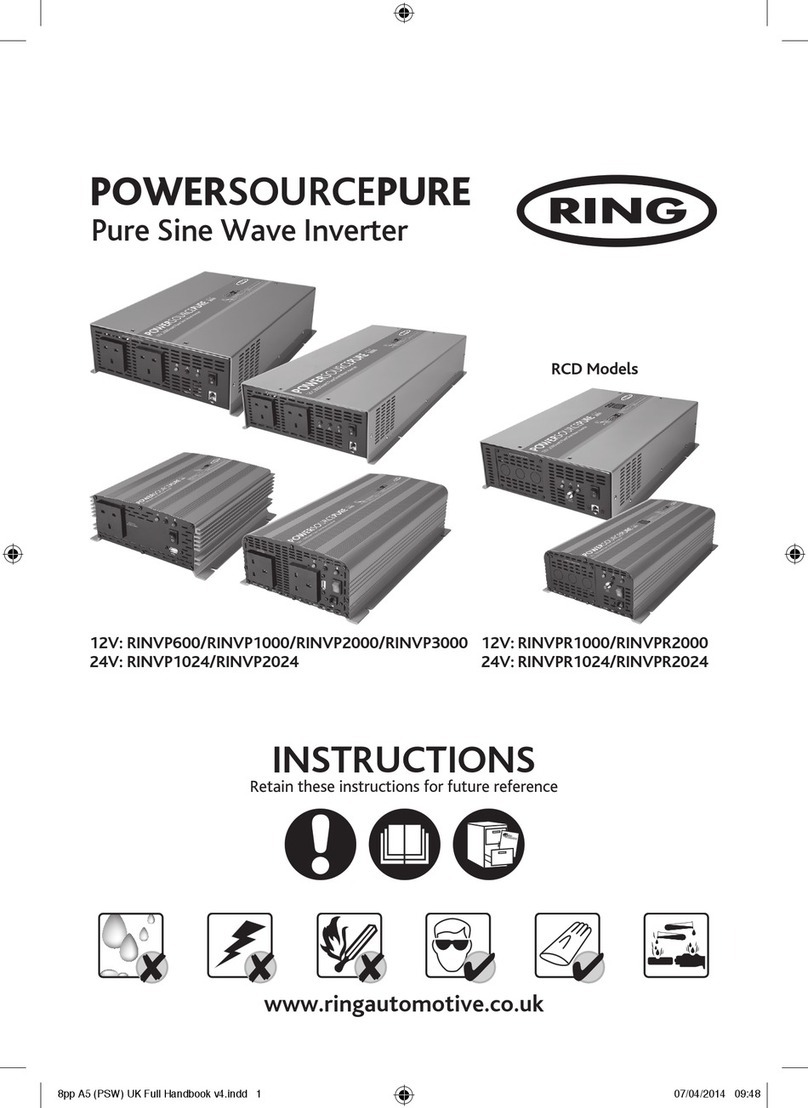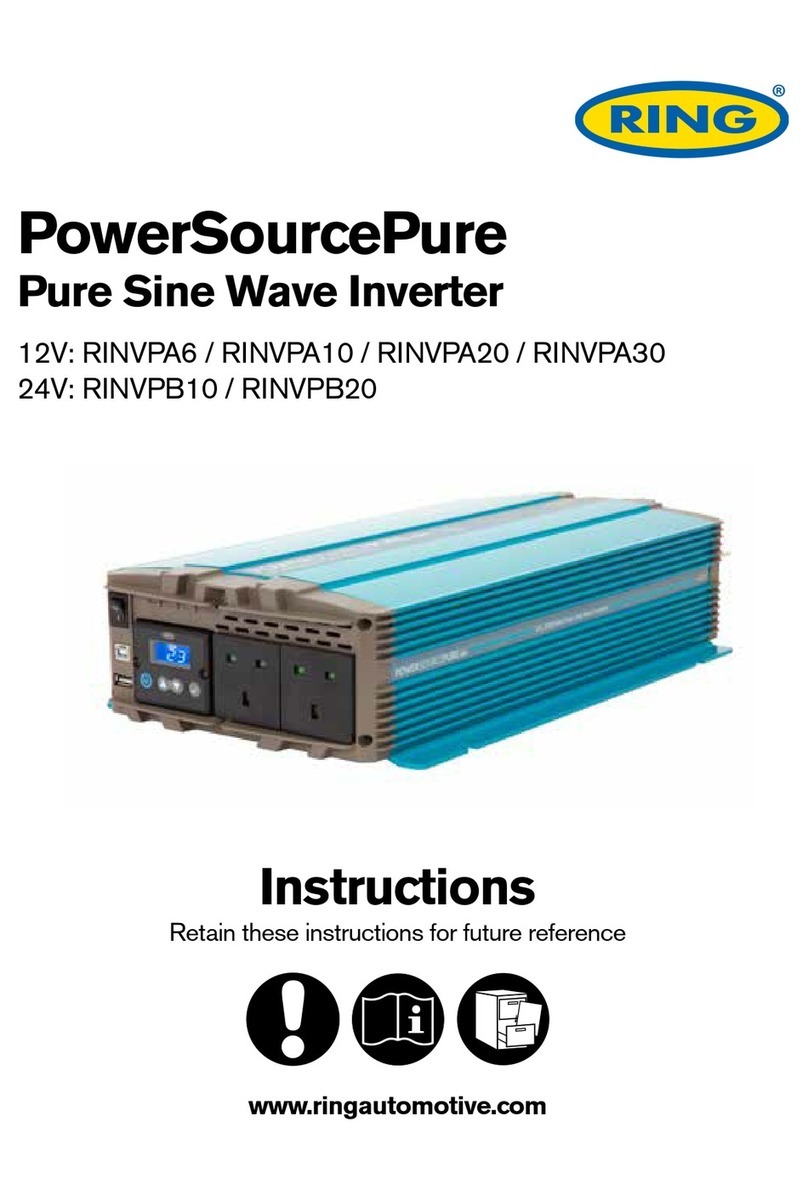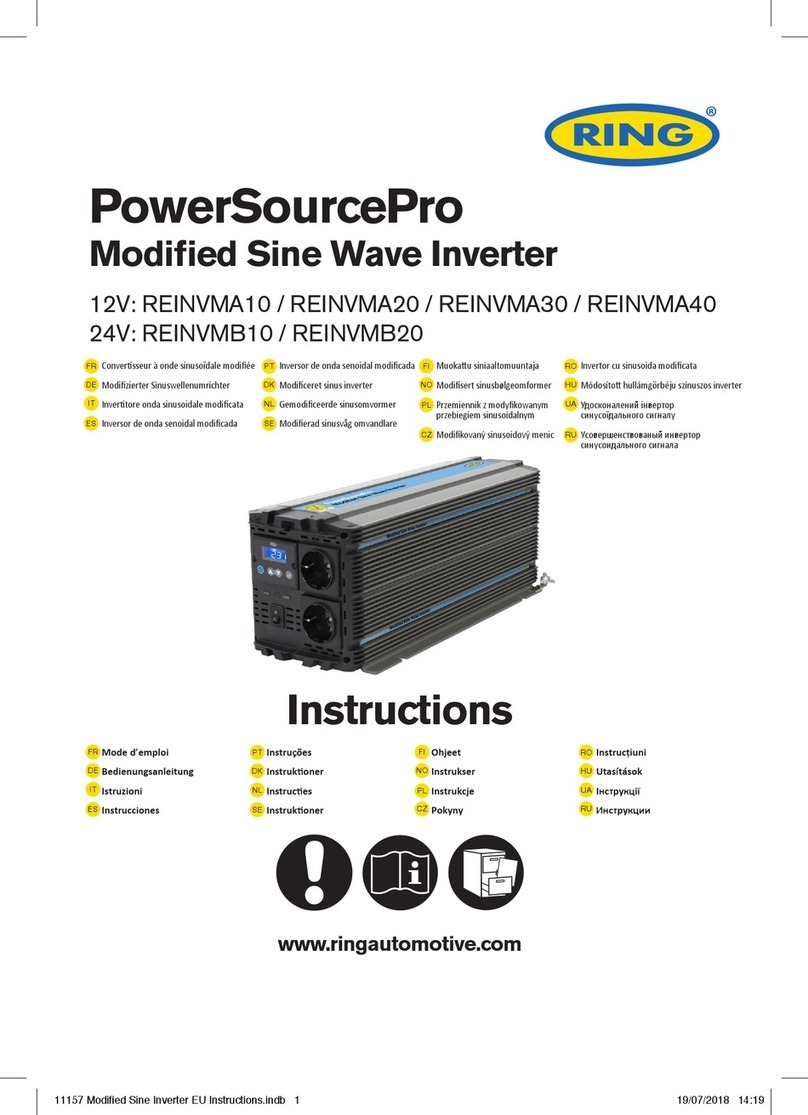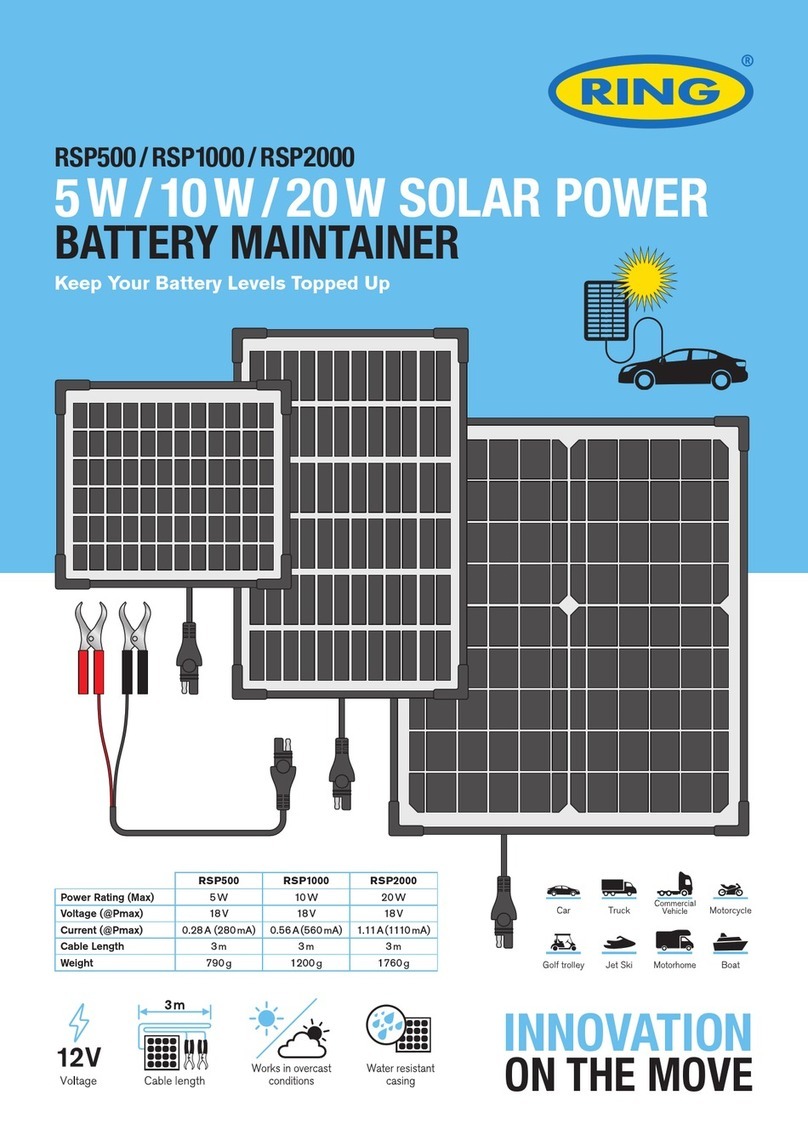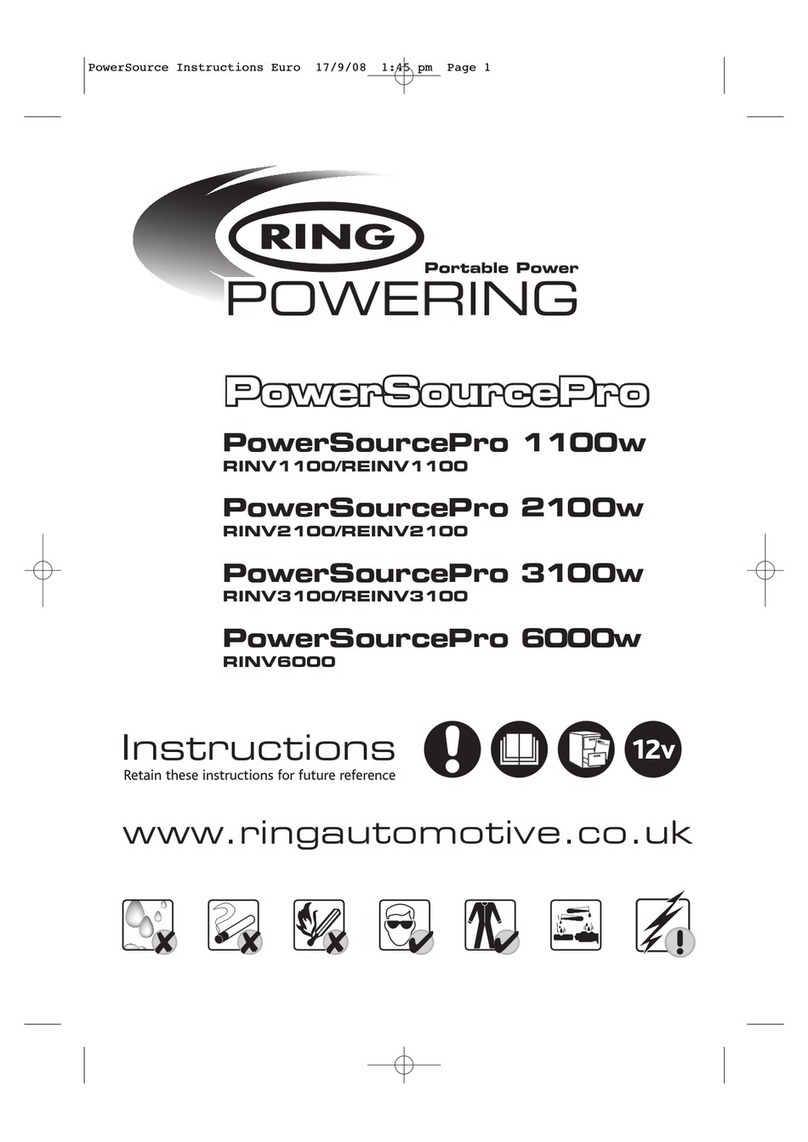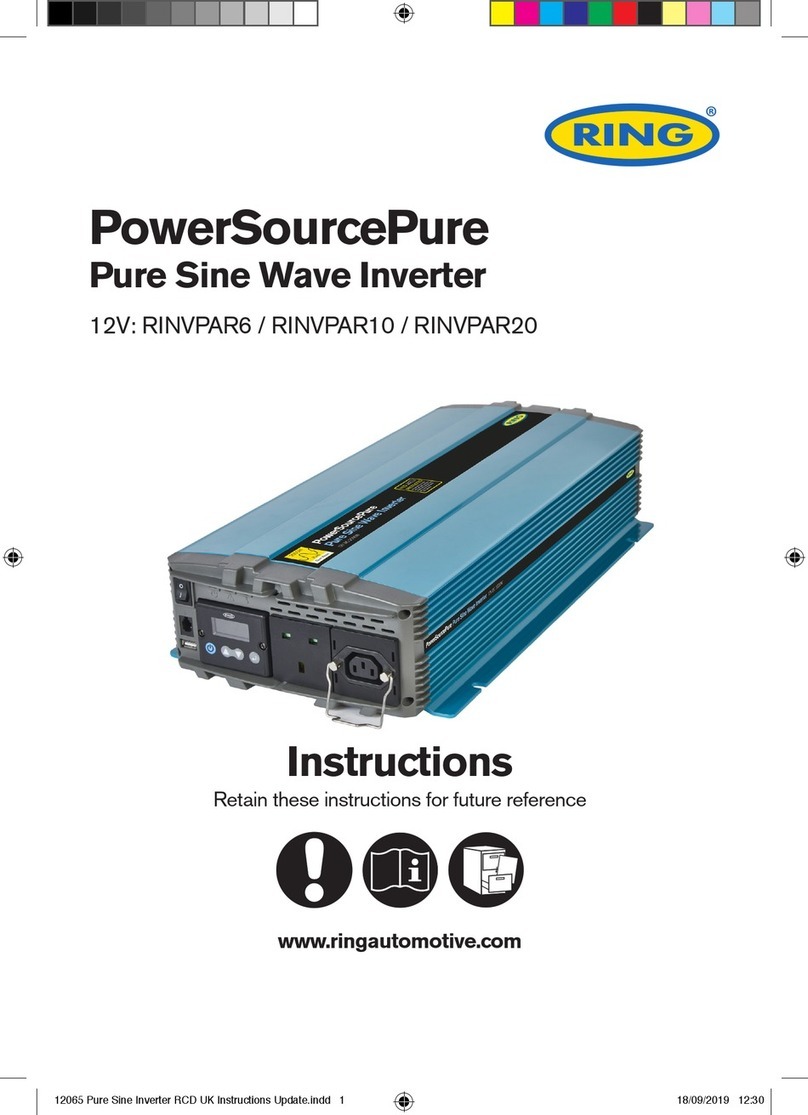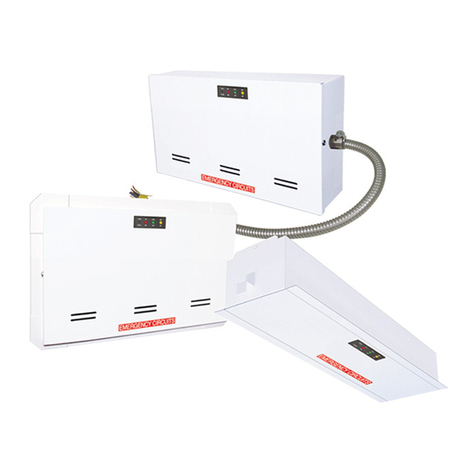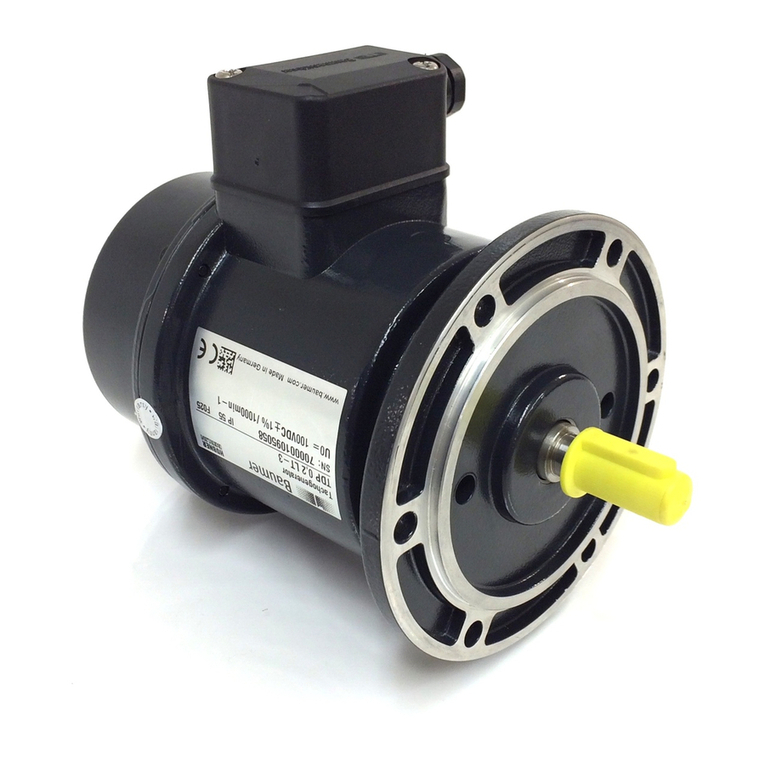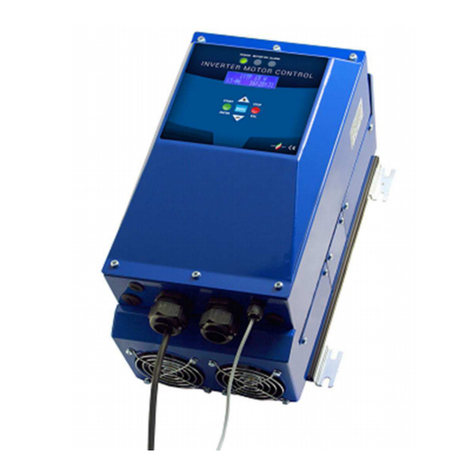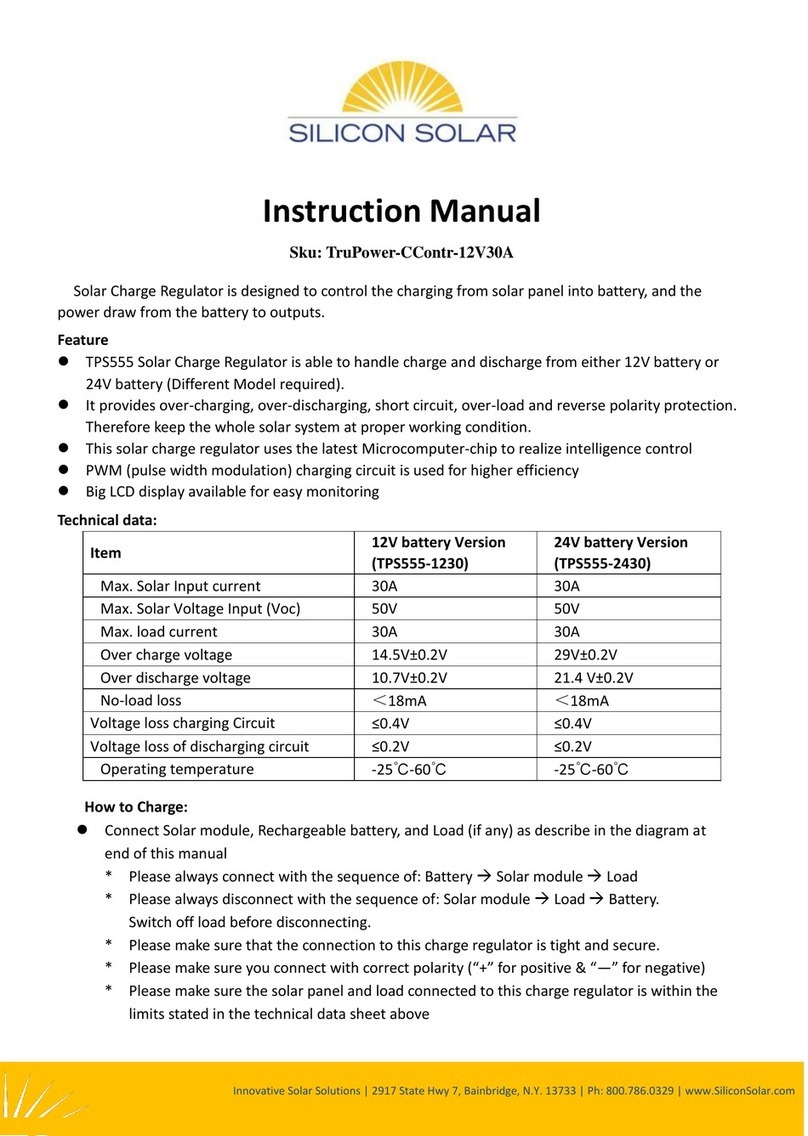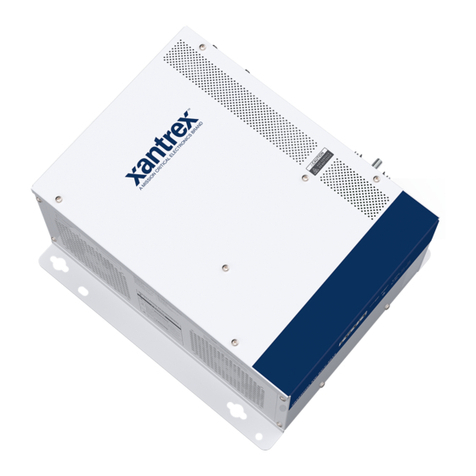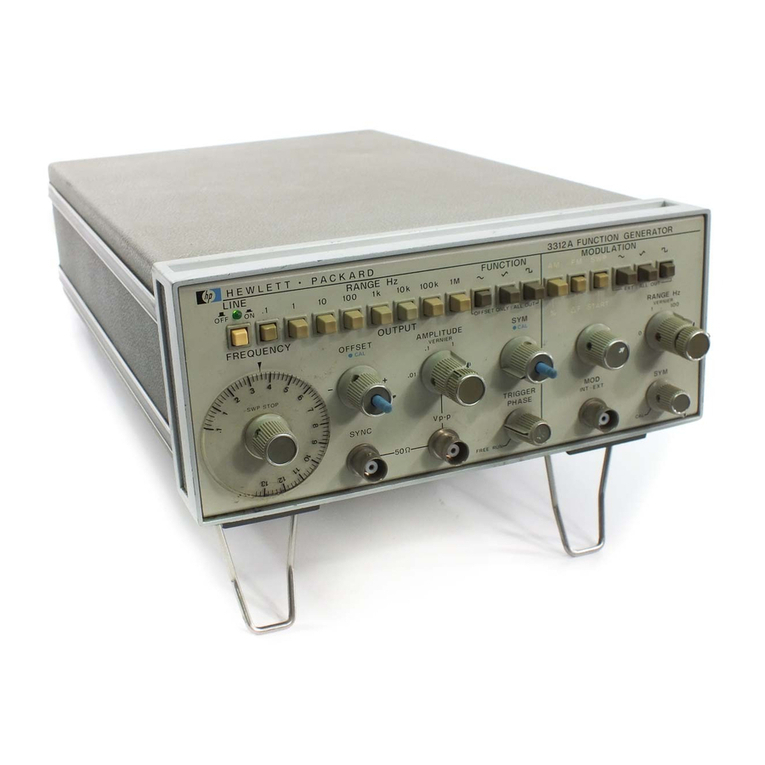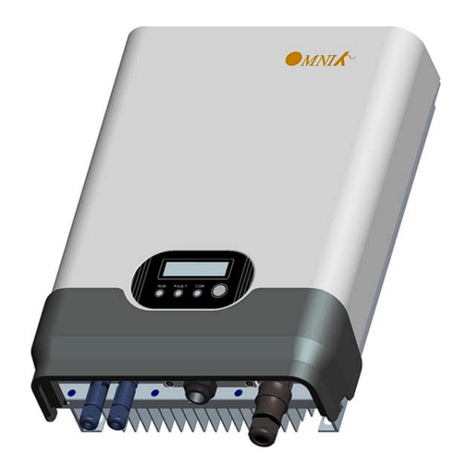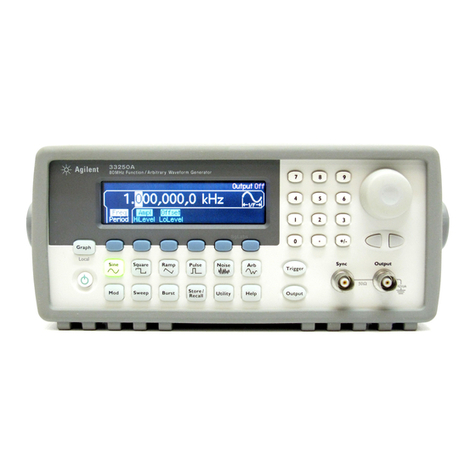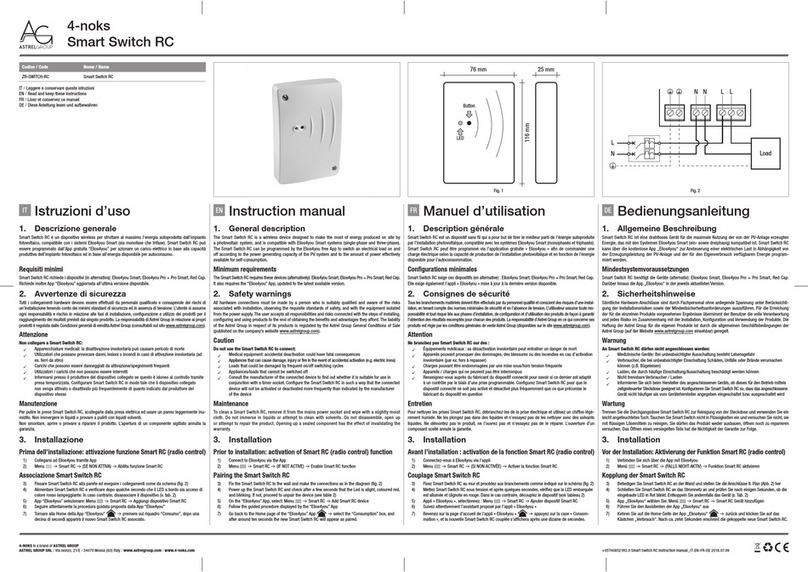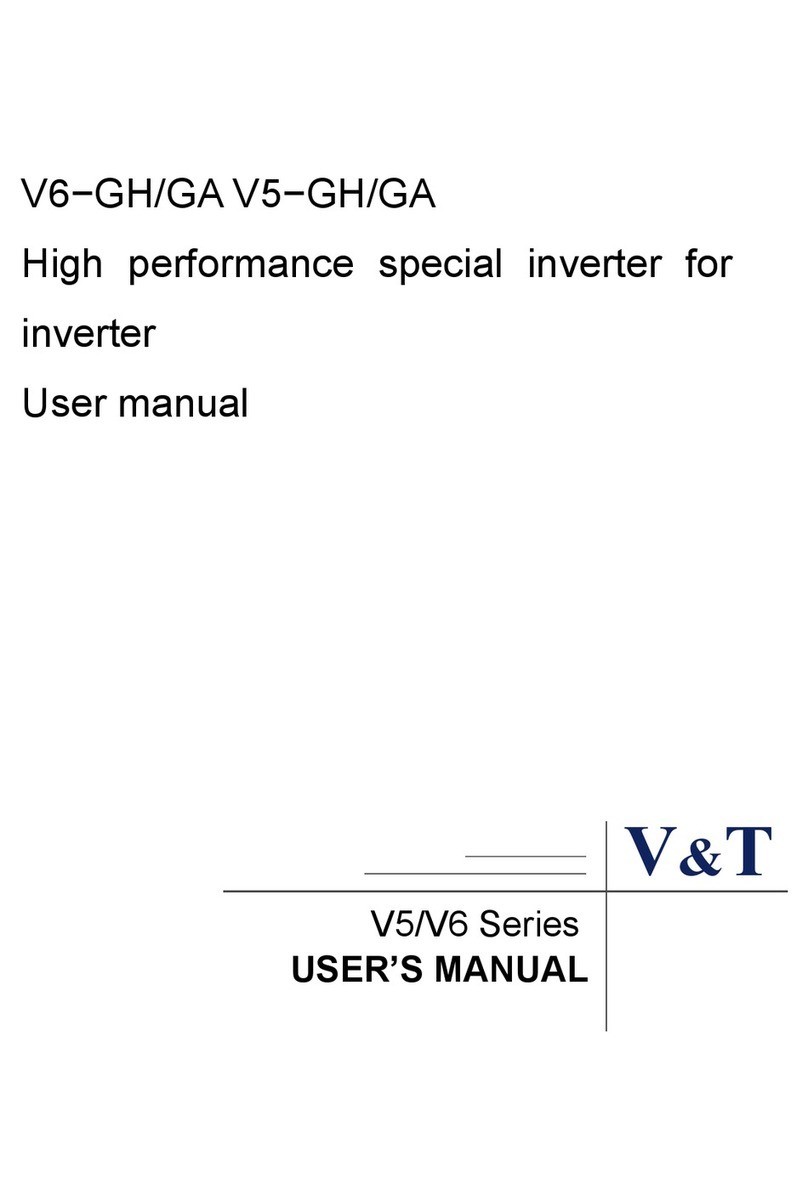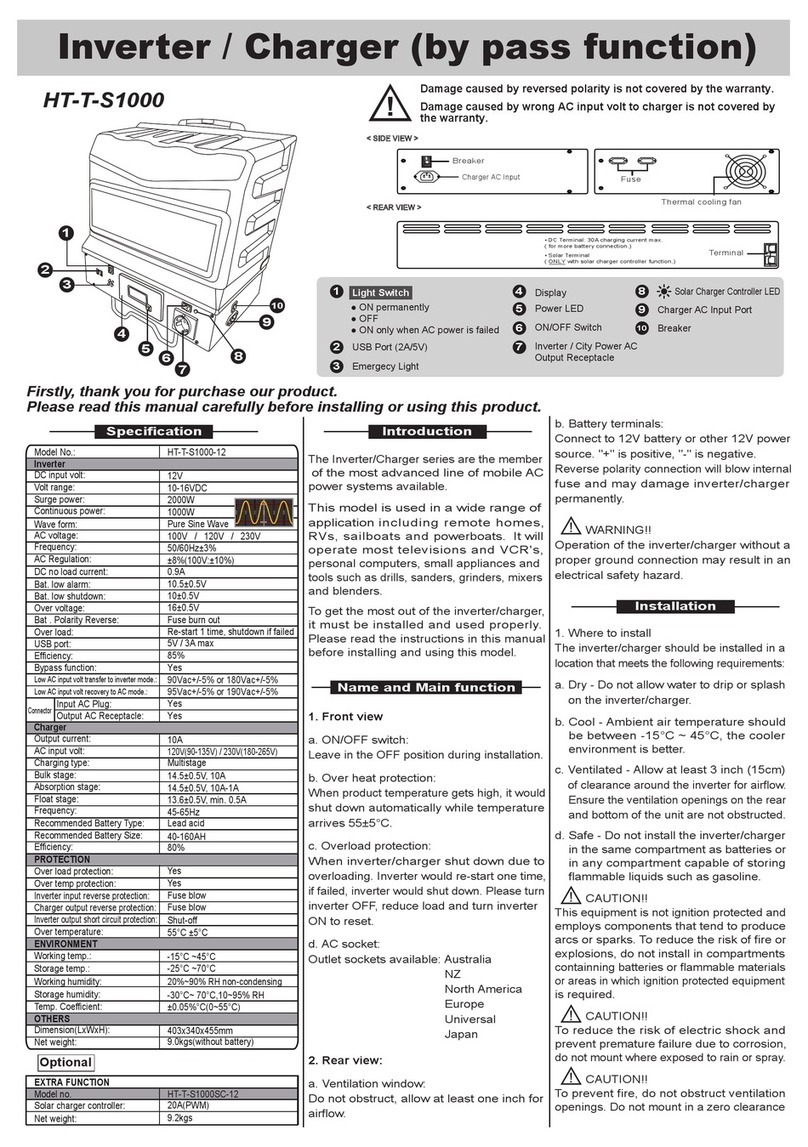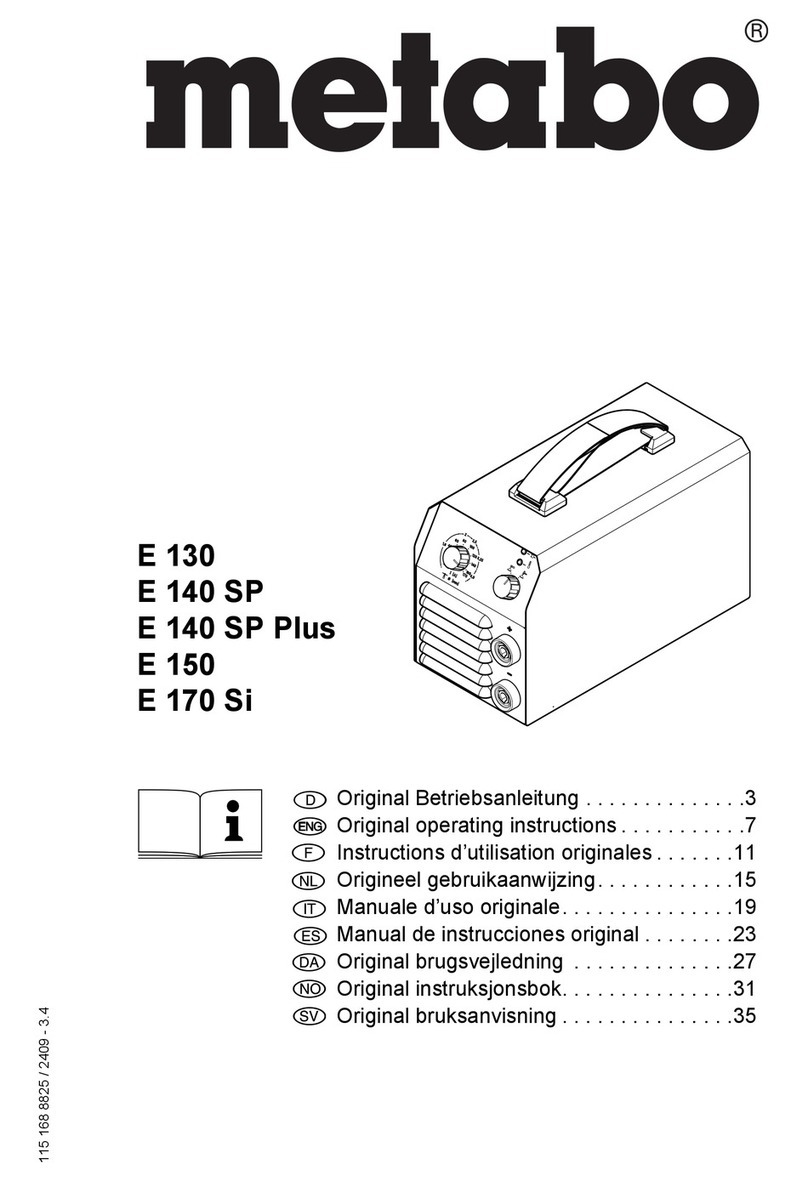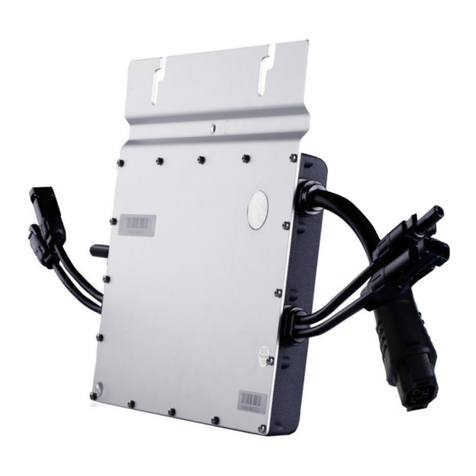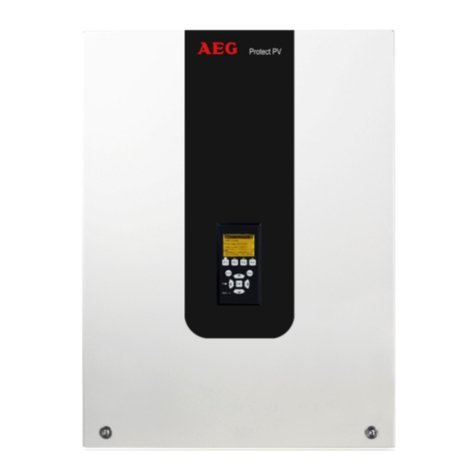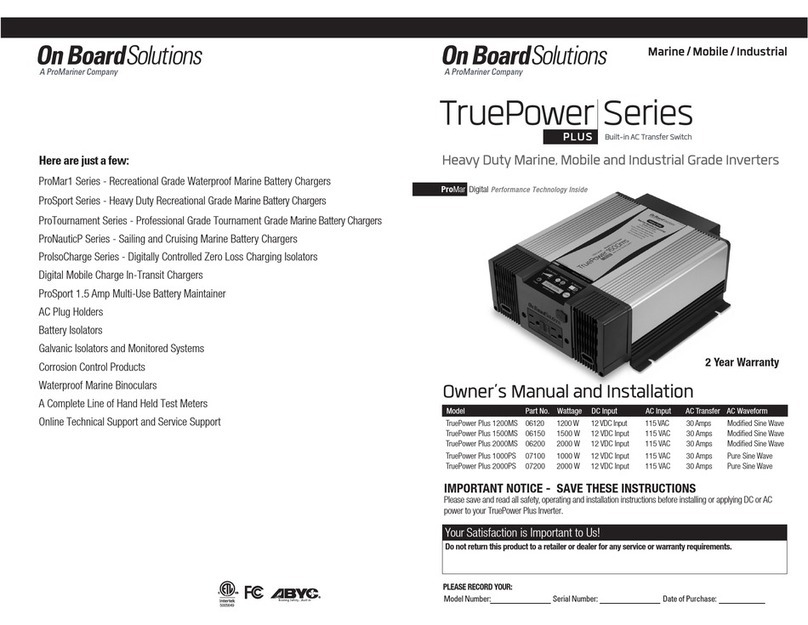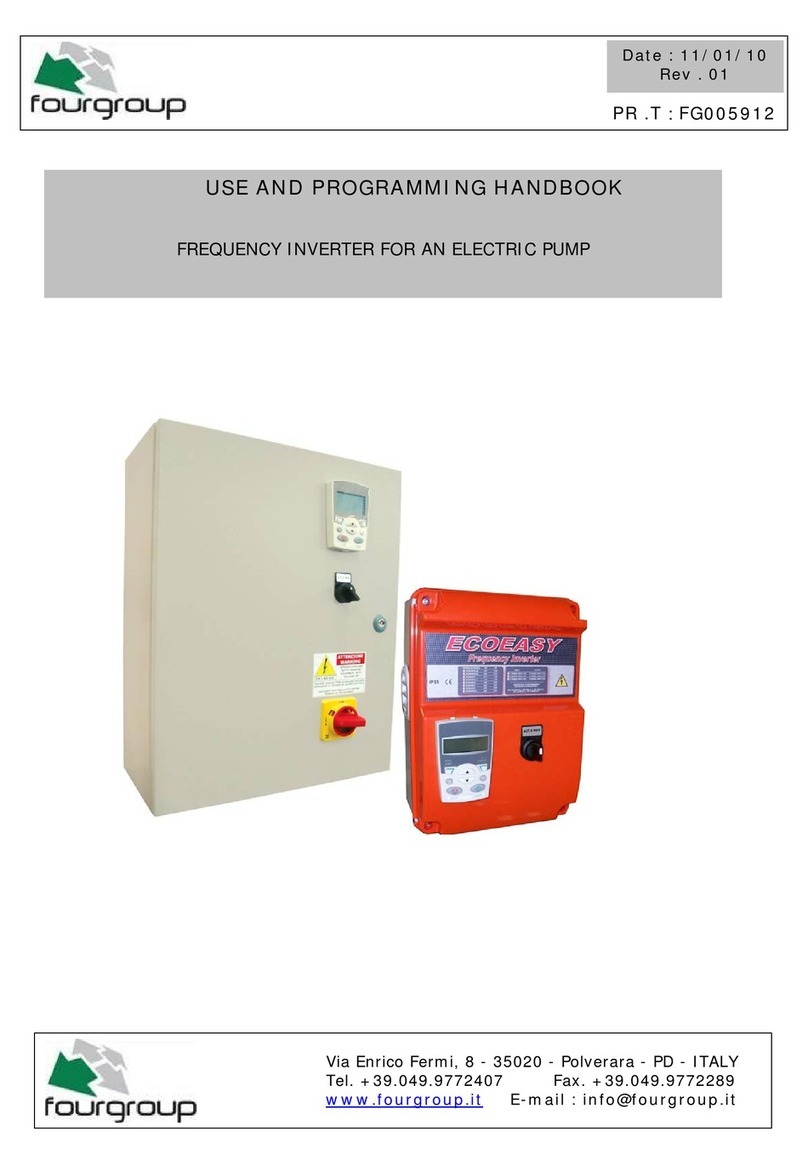2
Introduction
The Ring Digital Inverter is an electronic device that converts a low voltage 12v DC current from a battery, or
other source, to 230 volts 50 Hz AC mains power.
Special attention should be made to CAUTION statements in this user’s manual.
CAUTION statements identify conditions or practices that could result in damage to your Digital Inverter or to
equipment that you are using with it.
Power Supply
The battery or power supply must provide between 10.5 and 14.5 volts DC (a 12v car or leisure battery will
usually provide this) and must be able to provide sufficient current to operate the load (the item you require
to power)
The power supply may be a battery or a regulated DC power supply. In order to find out if your power supply is big
enough, divide the power consumption of the load (in Watts) by the input voltage (12v in the case of most vehicle
batteries) this will give you the current (in amps) that the power supply must deliver.
EXAMPLE: Load is rated at 100 watts
Power supply must be able to deliver: 100 / 12 = 8.3 amps
CAUTION THE RINVD150, RINVD300 OR RINVD500 MUST ONLY BE CONNECTED TO BATTERIES OR
REGULATED POWER SUPPLY WITH A NOMINAL DC OUTPUT VOLTAGE OF 12 VOLTS. THE DIGITAL INVERTER
WILL NOT OPERATE FROM 24V POWER SUPPLY.
Connecting to power supply
RINVD150
The RINVD150 Digital Inverter is fitted with a 12v power lead plug (internally fused) with 0.5m of cable for
connection to the power lead socket in your vehicle.The tip of the plug is positive and the side contact is negative.
Push firmly into the cigarette lighter power socket in order to ensure a good contact.
RINVD300 & RINVD500
The RINVD300 & RINVD500 Digital Inverter is fitted with two 4mm socket/screw connectors that enable
connection to be made to a 12v vehicle or leisure battery. The red is the positive and the black is negative cable.
The cables allow you to un-screw the socket screw on the Digital Inverter and connect according to the correct
colour, the crocodile clamps should then be connected to a 12v leisure battery onto the correct terminals
designated. Red (+) and black (-)
The RINVD300 only (not RINVD500) is also fitted with a 12v power lead (see RINVD150 for details).
Please check your appliance power consumption with rating of your power socket (typically 120 to 180 watts)
when connecting the RINVD300 to the power lead plug. Above this rating connect directly to the battery
CAUTION DO NOT USE WITH POSITIVE GROUND ELECTRICAL SYSTEMS
The majority of modern cars have negative ground electrical systems. If you are in any doubt, please check with a
qualified auto electrician or your local vehicle main dealer.
Connecting your Digital Inverter
Connect the Digital Inverter input to the vehicle/leisure battery using the cables (12v power lead for RINVD150 &
RINVD300) supplied. Ensure the load requirements are within the parameters of the Digital Inverter output; plug
your appliance into the socket of the Digital Inverter.
CAUTION Certain rechargeable devices are designed to be plugged directly into an AC socket to be recharged.
These devices can damage the Digital Inverter.When first using a rechargeable device, monitor its temperature for
10 minutes to ensure overheating does not occur.
In some cases there can be an incompatibility between some appliances and modified sine wave inverters.When
in doubt, consult with your appliance manual.
Fuse replacement
RINVD150 – 1 x 25amps RINVD300 – 2 x 25amps RINVD500 – 3 x 25 amps
Please consult a qualified electrician to replace any fuses.
Powering Digital Inverter User Manual.indd 2 14/10/2010 10:40

